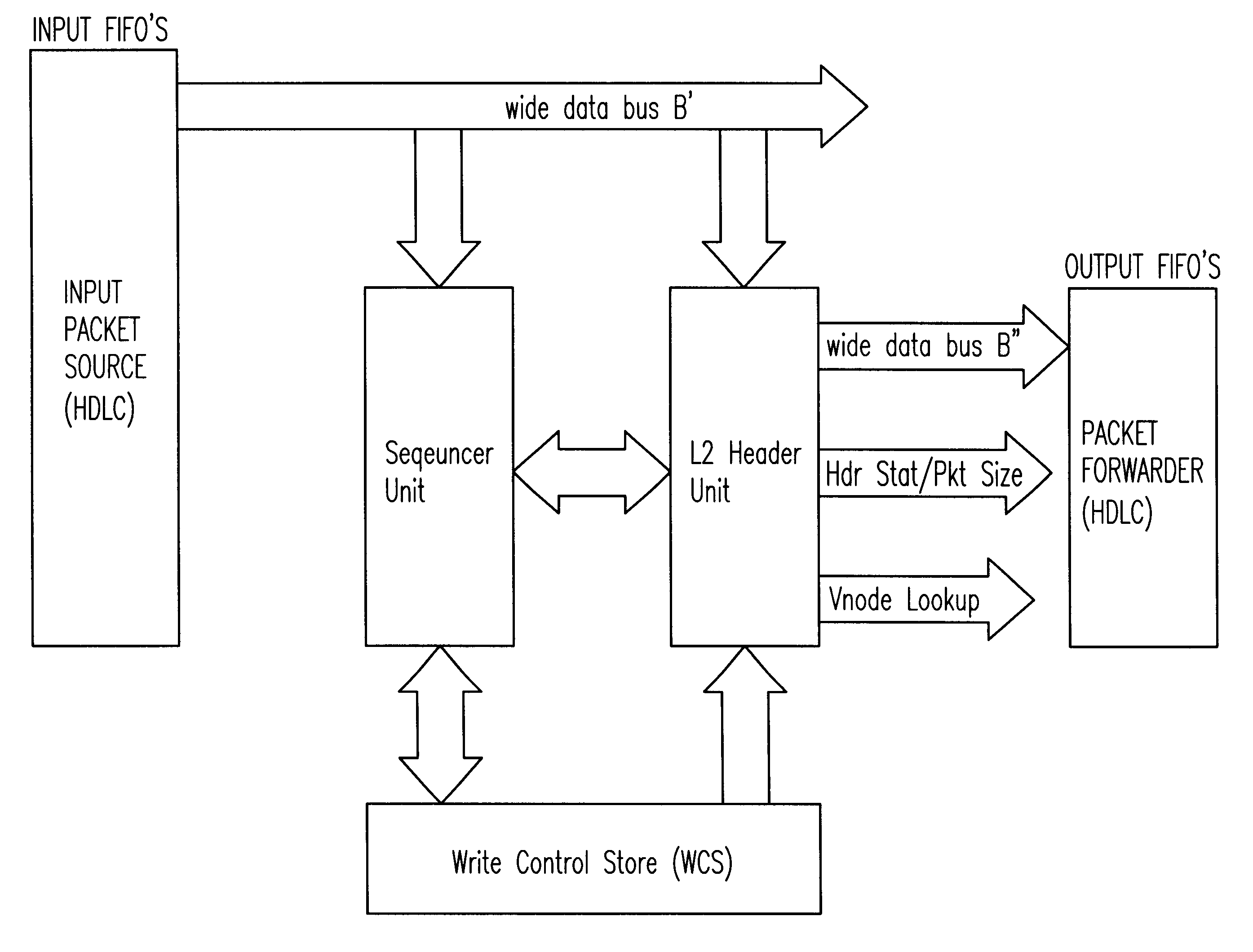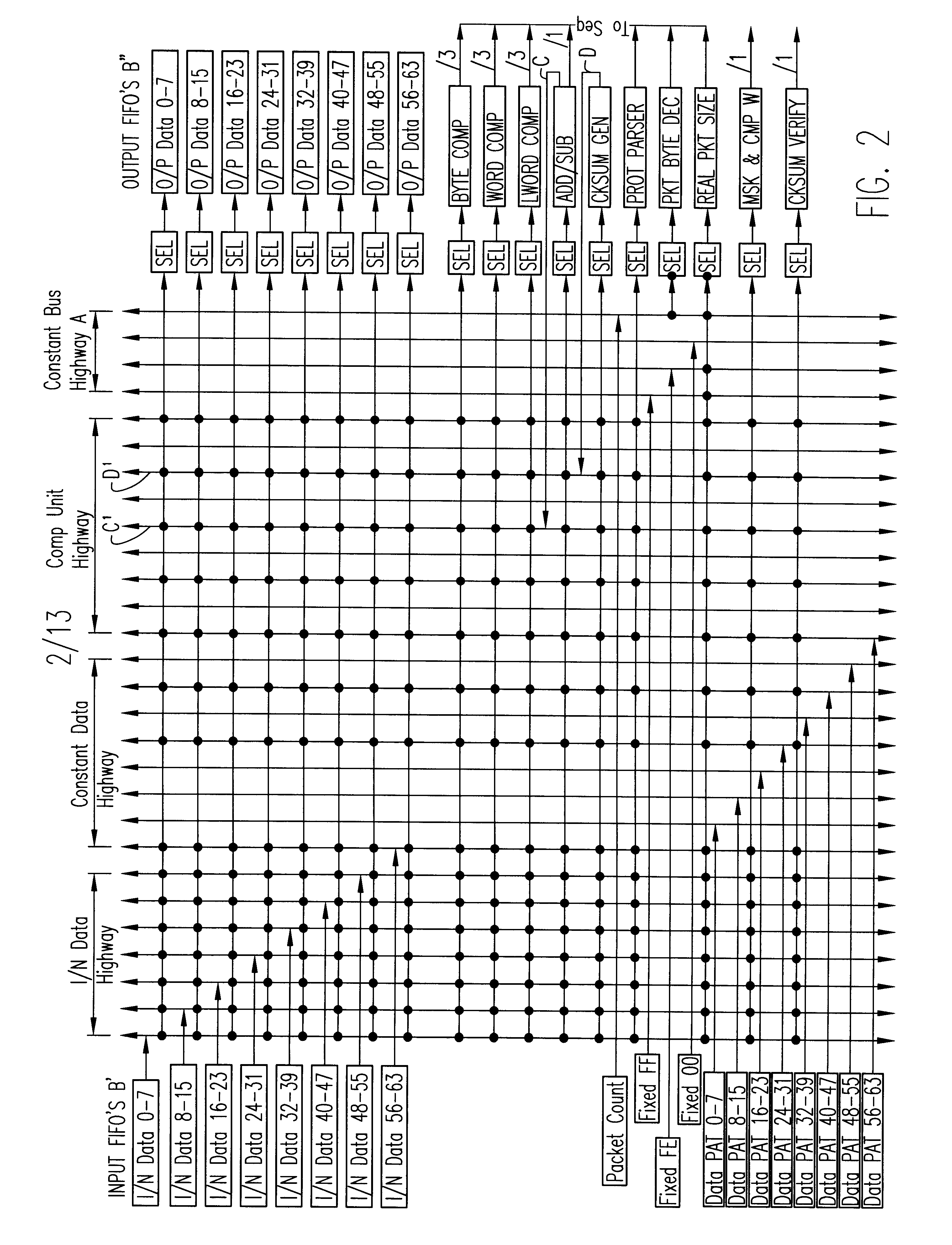Method of and system for processing datagram headers for high speed computer network interfaces at low clock speeds, utilizing scalable algorithms for performing such network header adaptation (SAPNA)
a computer network interface and high-speed technology, applied in data switching networks, time-division multiplexing selection, multiplex communication, etc., can solve the problems of optical physical layers having substantial and undesirable dead time, current processors running on the order of 200 mhz clocks cannot keep up with very high data rates, and the speed of current processors is ever increasing
- Summary
- Abstract
- Description
- Claims
- Application Information
AI Technical Summary
Problems solved by technology
Method used
Image
Examples
Embodiment Construction
Referring to FIG. 1, a hardware design for functionally processing a level 2 header unit in accordance with the invention (labeled "L2 Header Unit",) is presented, involving basically two sections--this L2 header unit and a sequencer unit, so labeled. An Input Packet Source feeds to an input FIFO stream, shown as the "wide data bus" at B.sup.1, applying the input FIFO data stream (upper left in FIG. 2) to the ingress of the L2 Header Unit. The L2 Header Unit performs header manipulation or adaptation under the guidance of the sequencer unit, also fed input FIFO data from the bus B.sup.1.
The interface of the Input Packet Source, as is conventional, has Data and Control FIFO's (not shown) with the latter triggering the sequencer to start the processing of the packet data in the Data FIFOs, using the packet byte count and status in the Control FIFO, and extracting the correct amount of data from the Data FIFO as is well known.
The data from the Level 2 header unit, ends up in the Packet...
PUM
 Login to View More
Login to View More Abstract
Description
Claims
Application Information
 Login to View More
Login to View More - R&D
- Intellectual Property
- Life Sciences
- Materials
- Tech Scout
- Unparalleled Data Quality
- Higher Quality Content
- 60% Fewer Hallucinations
Browse by: Latest US Patents, China's latest patents, Technical Efficacy Thesaurus, Application Domain, Technology Topic, Popular Technical Reports.
© 2025 PatSnap. All rights reserved.Legal|Privacy policy|Modern Slavery Act Transparency Statement|Sitemap|About US| Contact US: help@patsnap.com



